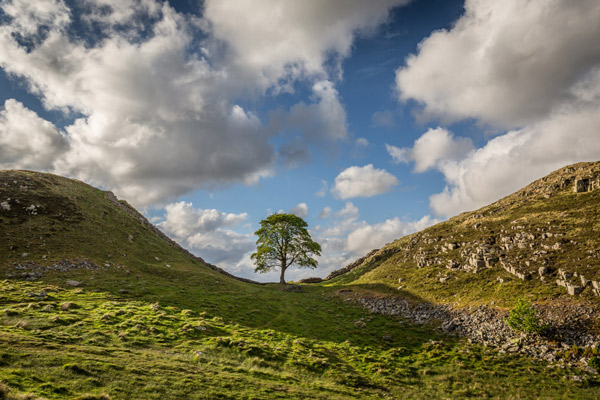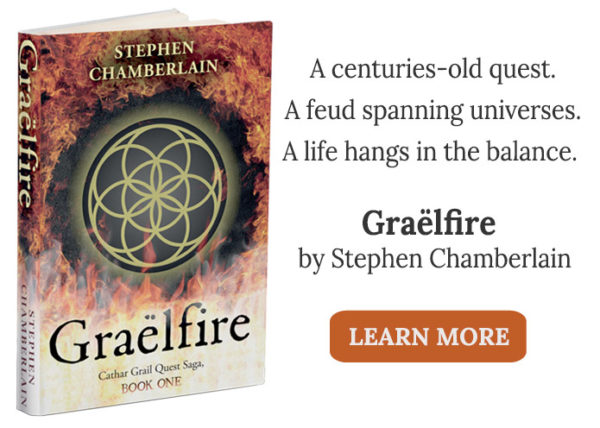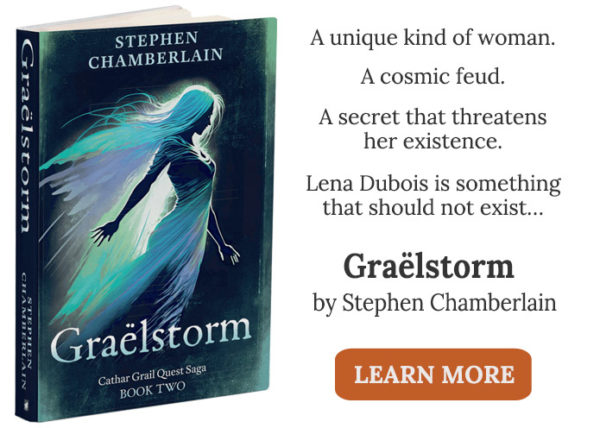Hallowed: something that is respected, admired, or considered to be holy.
We got a Christmas card last year featuring the Sycamore Gap Tree on Hadrian’s Wall. Now there is a void in the landscape where it used to be. Dubbed the most photographed tree in the UK, it became famous after appearing in the 1991 movie Robin Hood: Prince of Thieves starring Kevin Costner and Morgan Freeman. It was a beloved icon for many, and its recent felling by vandals sparked outrage across the country. The TV chef and a native of Northeast England, Si King, put it like this: “I hope whoever’s done that has a conscience because you’ve just murdered a sentinel of time and elemental spirit of Northumberland.”
Sacred Roots
The anger over the Sycamore Gap Tree’s demise is understandable. Trees are deeply rooted in the human subconscious, and those that stand out often draw our attention. They impart a sense of place and orient us to our surroundings, as well as marking the transition between shifting seasons. Rising from the ground to the sky, many religions saw them symbolic of the link between the earthly and spiritual realms. Sacred trees include Yggdrasil in Norse cosmology, the oak tree from the ancient Celtic world, the Bodhi Fig in Buddhism, and the Trees of Life and Knowledge in the Garden of Eden. Deciduous trees became motifs for death and rebirth owing to their annual cycle of leaf fall and regeneration, while evergreens epitomized vitality and eternal life. Holly, ivy, and fir sprigs were believed to have a magical potency and have been decorating our homes in winter since pagan times. Some say the Christmas tree owes its origins to this age-old ritual.
Flights of Fancy
Trees have stoked our imagination throughout the ages. Gnarled trunks could be home to nature spirits or gateways to the fairy realm, and something can unsettle us when trees mass together. They shed their individuality and merge into a shadowy, untamed world far removed from the ordered predictability of everyday life. Magic could lie within, but so could danger—just like in the movie The Blair Witch Project and countless other horror films. That’s the thing about woodlands—they evoke a sense of menace in us because we can’t see what is lurking behind their trunks or in the shadows they cast. Small wonder people were wary of dark woods and forests, when predators and the supernatural were a fact of life. It’s a fear of the unknown that’s hardwired into our DNA, and while the days of wolves and evil witches might be gone, how many would enter a wood alone after dark without feeling a frisson of anxiety?
The fact is trees and woodlands inspire our sense of wonder. Think of the Dark Hedges in Northern Ireland, a tunnel of twisted beech trees made famous in Game of Thrones as a setting for The Kingsroad. Then there are the ancient forests of Grimm’s fairy tales, where wicked witches and sly wolves dwell. J. R. R. Tolkien’s Middle-earth is full of ancient and mystical woods such as Lothlórien and Mirkwood. These are not just backdrops, but places where reality and the supernatural merge. Take Old Man Willow—a malign tree spirit in Tom Bombadil’s Old Forest, or Ents, those tree-like beings that act as shepherds of trees in Fangorn Forest. This idea of sentient trees or enchanted forests is a recurring element in fantasy fiction. J. K. Rowling’s Harry Potter series feature the Whomping Willow and Forbidden Forest outside Hogwarts, while Robert Holdstock’s Mythago Cycle has the primeval Ryhope Wood, which manifests physical beings from the minds of characters. Other examples include the Twisted Woods from Mervyn Peake’s Gormenghast series and the forest of Asfödel from my novel, Graëlstorm—a misty, overcast realm which draws the souls of the dead, and where they fade into oblivion when their karisma abandons them.
Quick to Fall, Slow to Grow
Such is the world of imagination and belief. In the everyday world, trees give us shelter, timber, food, and fuel. They provide clean air for our lungs, while many medicines come from plants that thrive within habitats they create. But some mean more to us than natural resources. They are much-loved symbols that live for hundreds, even thousands, of years. These living legends take generations to mature, and once they’re gone, it can be for a lifetime. That’s why The Sycamore Gap Tree’s felling leaves more than a hole in the landscape—it leaves a hole in the hearts of those who admired it.



